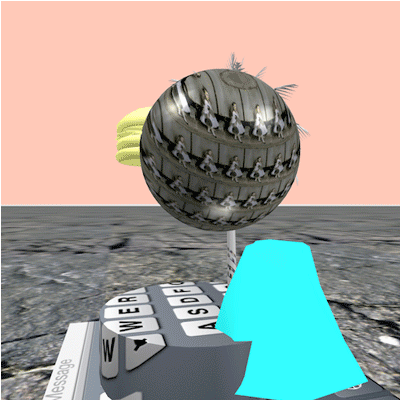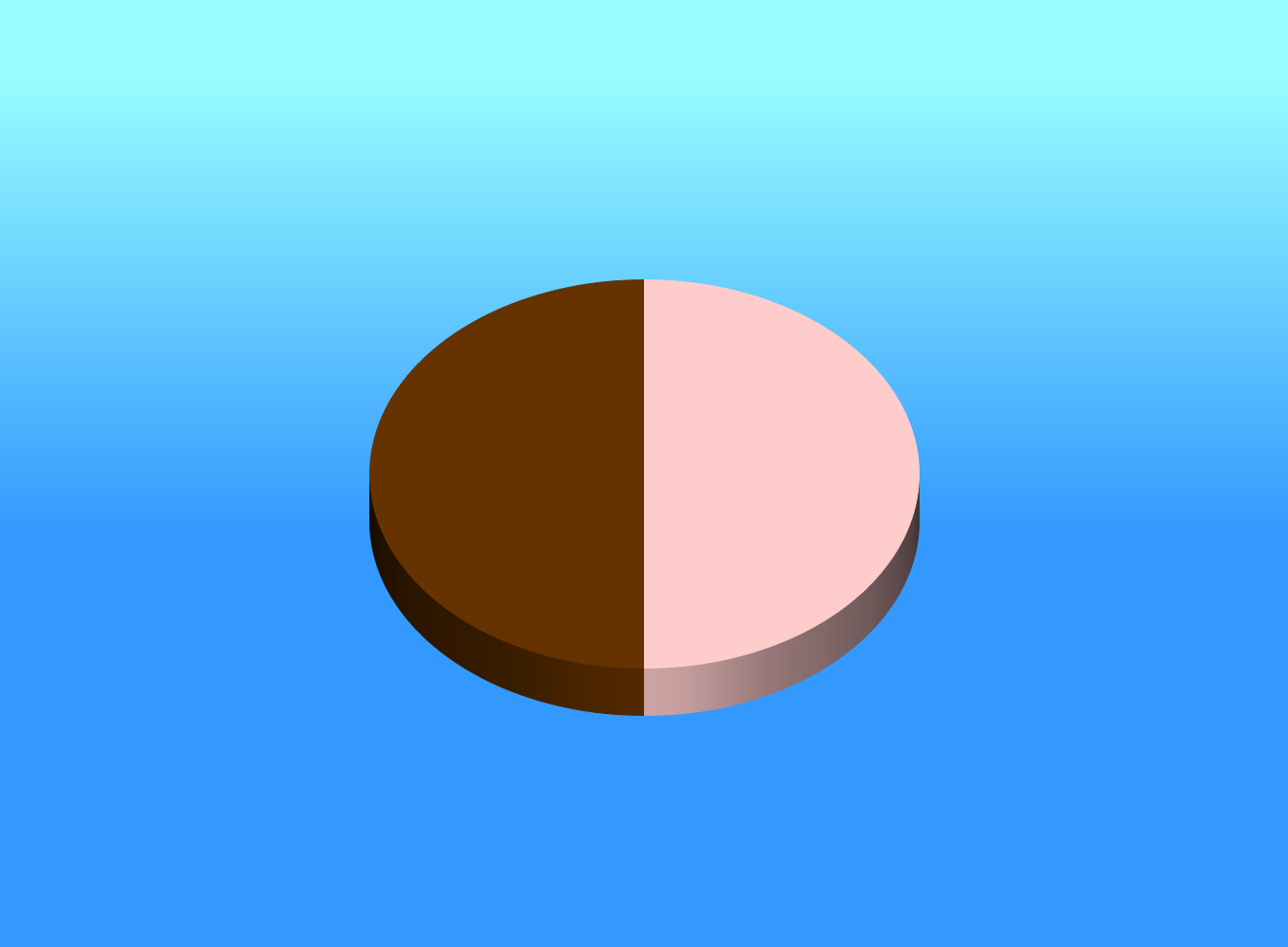Luke Nairn
Interview by David McLeavy
Published April 2014
-
Luke Nairn’s work jumps between the physical and the non physical and amongst other thing examines the internet as a space for endless potential and exploration. Nairn also uses digital media to push the potential of sculpture both physically and conceptually.
-
I notice that you studied a Sculpture BA. Do you consider your digital works as sculpture?
Yes, definitely. I started creating the works because I wanted to make sculptures but didn't have much space or the resources to build them. I realised that any structure I could imagine was possible in the digital world using programs like SketchUp and that was a massively exciting idea. The jpegs, gifs and videos of my digital works are windows into that world and are basically just viewing devices; the works are the sculptures that exist inside. It’s important for me to use sculptural elements when making the works, or referencing the history of sculpture in some way, I find myself using classical columns, marble or stone textures or existing artworks like Michelangelo's David. I think having that context is important maybe because I feel a loyalty to sculpture and I like the juxtaposition of this traditional and very tactile art form being presented in a non-tangible environment.
Do you feel like the digital sculptures are more successful than their physical manifestations? Also if you do have more space to make the physical works do you think they would have as much intrigue as their digital counterparts?
I don't really consider the digital works as having counterparts. The physical sculptures that I have made until now are very separate and come from different ideas. In a certain sense, Deptford-v2.0, which is the digital replica of Deptford, are counterparts, but each piece has a separate aim. Deptford- v2.0 looks at how information, data and physicality can be transferred to a digital/conceptual space and exists there in a quasi-real reality. It was one of my first non-physical works and has definitely been an important precursor to developing my interest in blurring the lines between these two worlds. I see all these different things that exist online, such as computerized 3d objects, YouTube videos, webcam photographs and screenshots very much as materials. We are endlessly uploading data and parts of ourselves from the physical world to online spaces, and I like the idea of creating these online monuments as a method of recording history and also like the fact that they have the potential to exist forever although they are essentially non-existent.
Because my work has an element of collage, what makes the digital sculptures successful for me is that I'm able to pick from a wide selection of objects from webpages to faux natural materials such as 3d models of rocks as well as things like html text and desktops, so as oppose to any physical work that I might make, the digital works are not restricted by size or my resources. But I think any physical works could be as intriguing because I think there is something interesting about the back and forth between digital and physical even just in terms of uploading and printing and seeing online aesthetics offline and offline aesthetics online.

Harmony in stone and text, digital GIF, 2014
You work heavily within the digital realm and I am interested to know where you take inspiration or what interests you. You mentioned how you are interested by the endless possibilities and objects available online through SketchUp and other archives but are you influenced by other artists or artworks that may not seem quite as obvious to your practice?
In terms of artists who influence me they are mainly sculptors, like Fischli/Weiss and Robert Pratt. There is something about the balance of found objects that are juxtaposed to create something new in their work that I'm drawn too and is an element that I find myself using. I guess its the everyday becoming re-seen that interests me, taking something you know so well you don't see it anymore and reinventing that thing and making it have new meaning. An artwork that I see as massively influential is ‘One and Three Chairs’ by Joseph Kosuth I was thinking about how I could use 3d design software to create the fourth chair, it led to me making digital sculptures really. When I discovered conceptual works like this and Michael Craig Martins ‘An oak tree’ for the first time they really made me understand art in a new way, what art could be, how it wasn't just this physical thing but a way of thinking. I think those reasons mean those works are important influences in my practice now and will continue to be in the future.
I am interested in the references you make to Michael Craig Martin and Joseph Kosuth and it seems that the one thing that really fuel these works is their titling. I want to know how important titling is to your work and if it’s something you consider when presenting a work.
There is definitely a consideration; I like the concept of the work to be inclusive of the title using it as a textual element that the work can expand into. Like you said Craig Martin and Kosuth use titles to fuel their works and that's what interests me when the title is as much the artwork as the visual element.

Deptford-v2.0, digital file, 2013
Do you ever feel a pressure when it comes to titling your work or feel the pressure that the title may be misleading in some way?
I think there is a bit of pressure to make sure its not misleading, I guess the most pressure can come from a work where a title feels like its never going to present itself. Sometimes I'll let the title change a few times before I settle on something, that's what I like about displaying works online everything can be edited and can organically evolve to some degree.
It seems that in your digital works the objects seem to sit within an endless field of colour or almost nothingness. Is this some sort of reference to the Internet itself or am I reading too much into it?
Yeah that endlessness is the Internet, it’s the infinite online space where the structures monumentalize some of the information that exists there. The Internet is a limitless void and I'm interested in how you record something in that.
Do you think your digital works have a more intimate potential than your physical works due to the way that an audience may encounter them? There is something very intimate and personal about viewing a video or digital file on your laptop as oppose to visiting a gallery and walking around a sculpture. What do you think to this idea?
I would say viewing my physical sculptures is more of a intimate encounter than viewing the digital works, due to galleries or exhibitions not being as accessible as the Internet. Online space is something we all potentially have easy access to and can view content on, viewing work online is much less of a unique experience. Although I think there is an intimacy that comes from the way people interact with that experience. You have the option to download and share images of the works you like so the art viewing process becomes unique and tailored, rather than considering a viewer it’s more about a user experience. What interests me about the way these digital pieces are encountered is there accessibility, because the presentation method of digital works in general is via laptop or phone the works have the potential to penetrate further into people's everyday lives and can engage with a much wider audience.

Affinity, digital file, 2013
So what’s next for you?
I'm making some new work for an exhibition called 'Show But Also Tell' its apart of the Chinese Visual Festival 2014 at Kings college London. The exhibition will have a live event aspect where the 10 of us in the show will take part in live interviews with each other about the work we are showing and our practice. It’s a really exiting project that I’m looking forward to taking part in it.
Also I've been asked by Dazed and Confused magazine to make a couple of digital works for their website, one is for their monthly play list series and the other is a sting animation that will play before videos, while later this year some of my sculptures are going to be published in a new publication called Great Ode. In terms of future work, I know I definitely want to make some more physical works and I have thought about 3d printing some of my digital pieces, the idea is still in the early stages but am looking forward to spending some time working on it over the next couple of months.
-
Luke Nairn lives and works in London. Recent exhibitions include 1840’s GIF Party, Tate Britain, London, Urban Lab Opening, Urban Laboratory, Hong Kong and Synonym, Take Courage Gallery, London. Web projects include Alone Together, 15folds.com and Rubbish Gallery, advertisingexhibitions.co.uk.
If you like this why not read our interview with Rachel Adams
-
© 2013 - 2018 YAC | Young Artists in Conversation ALL RIGHTS RESERVED